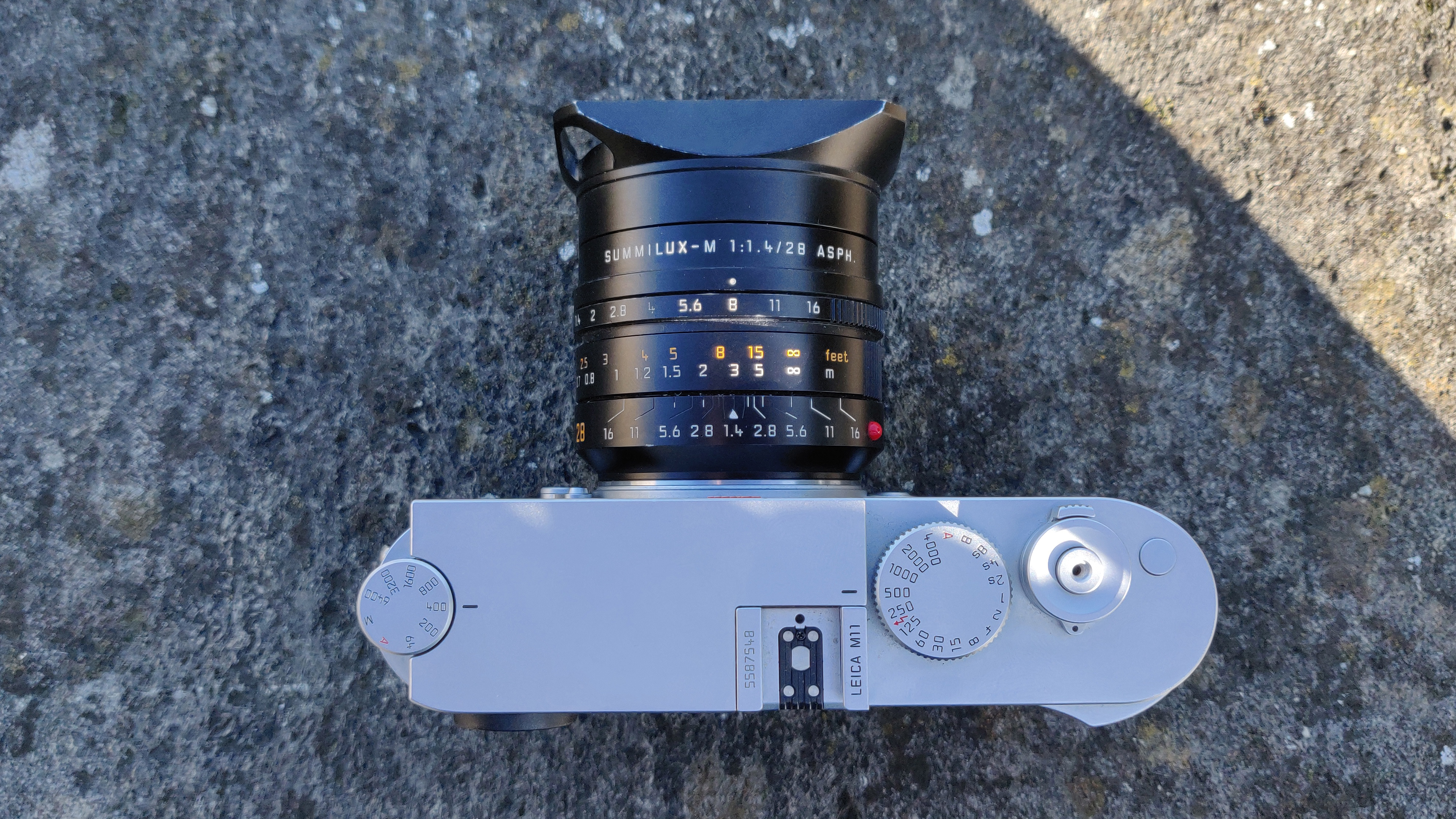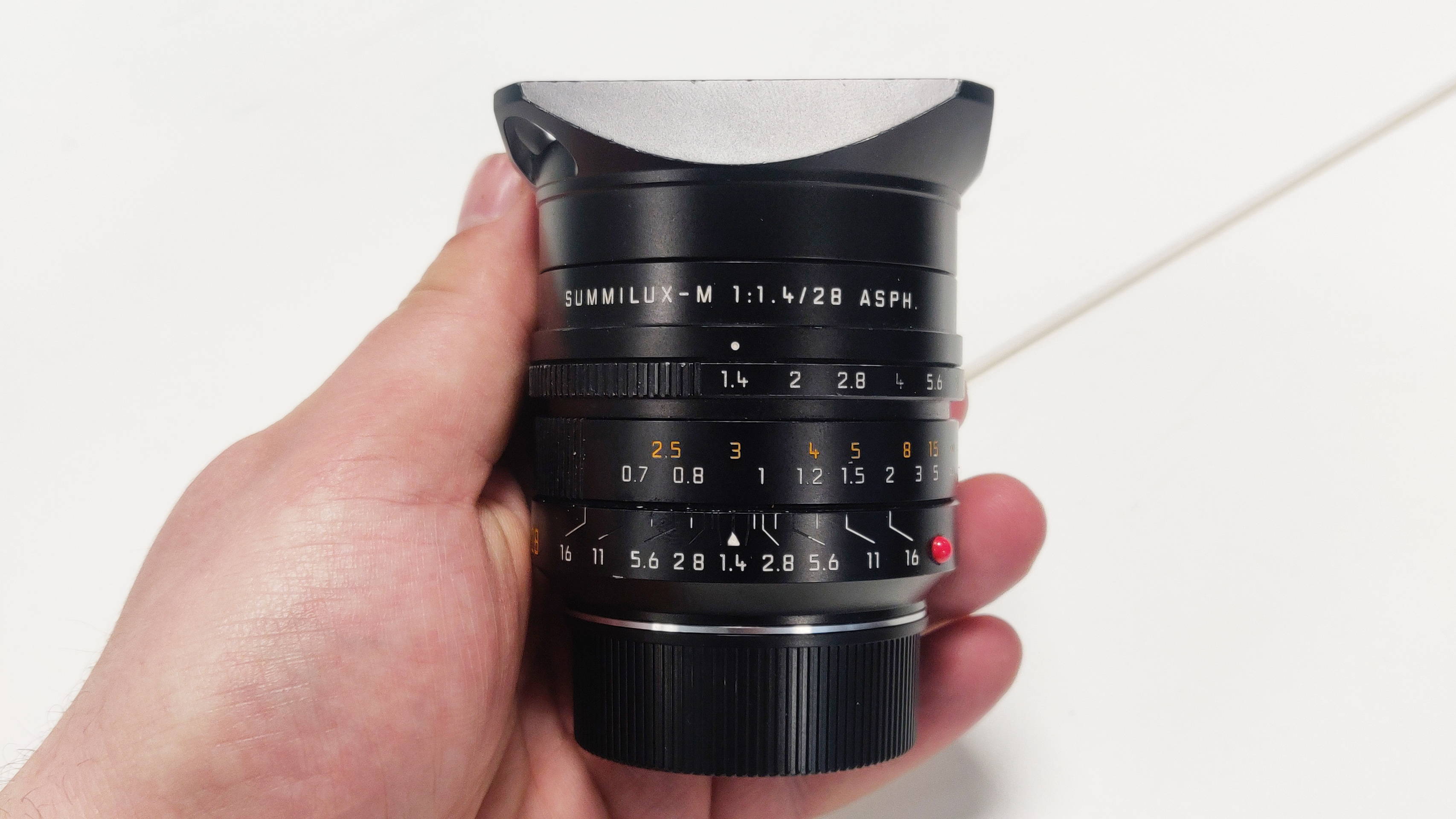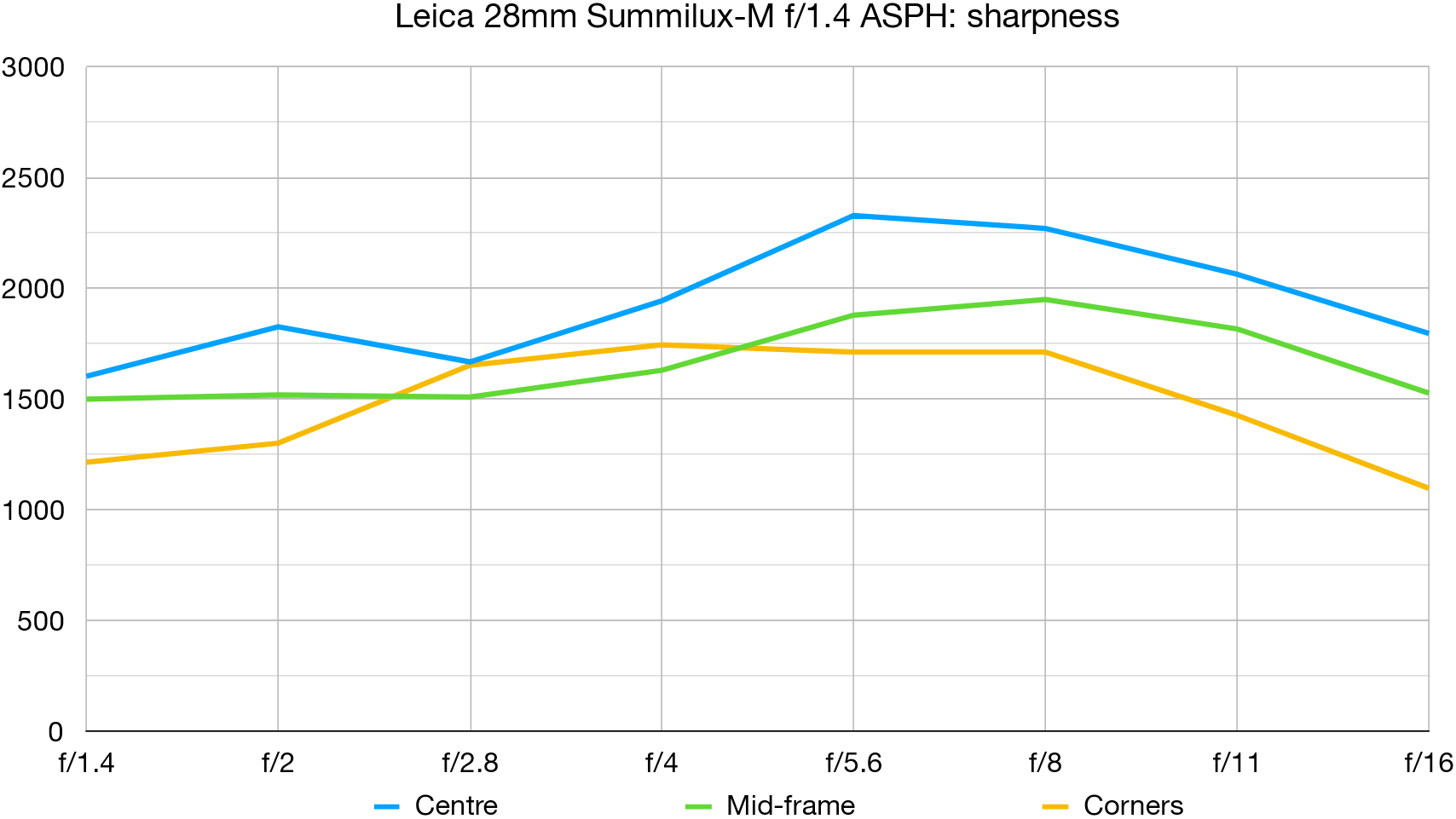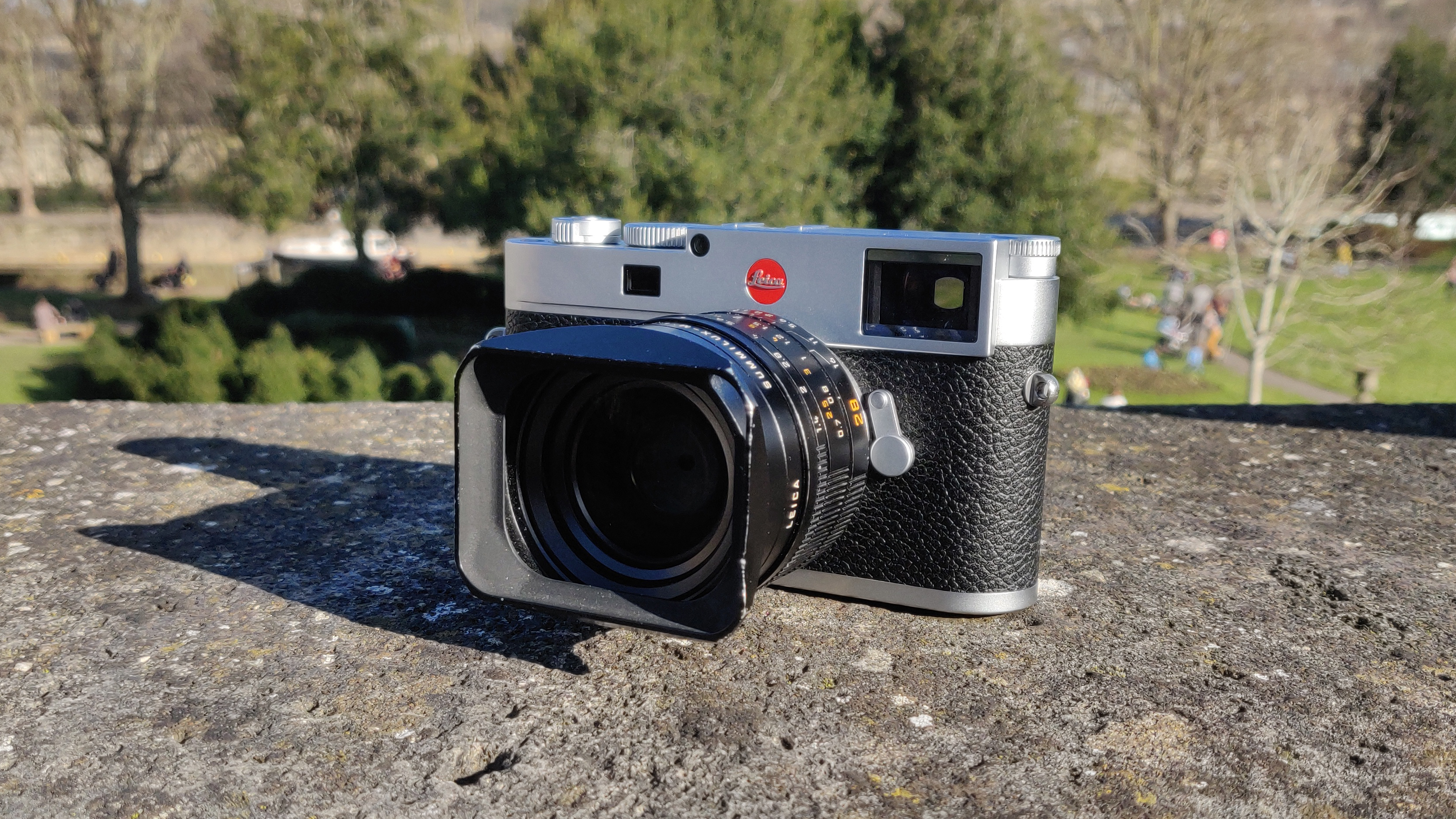Digital Camera World Verdict
If you’ve been looking for the ultimate 28mm lens to fix onto your Leica for street, reportage, or even landscapes then this Summilux is the one to get, but be prepared to pay handsomely for it. The Leica 28mm Summilux-M f/1.4 ASPH. is built like a tank with only the best materials used, and functions as expected from the renowned German manufacturer. But it will cost you a small fortune to own such a legend of a lens; however, if you’re looking for this to be your one lens to use on every occasion and be strapped to your camera for the end of time, it is a wise investment- a lens like this carries a lot of prestige with photographers around the world and if they own one they hold on to it, or if they find it, it's never in stock for long, so if you find one in stock then go for it!
Pros
- +
Outstanding build quality
- +
Great form-factor
Cons
- -
No filter thread
- -
Very expensive
Why you can trust Digital Camera World
The Leica Summilux-M 28mm f/1.4 ASPH. is a rather heavy lens, weighing in at a hefty 15.5oz / 440g, it features 10 elements in 7 groups and 1 aspherical surface, the first surface in the last group. Fortunately, the Leica Summilux-M 28mm f/1.4 ASPH. does not share the same fate as the Leica Summilux-M 24mm f/1.4 ASPH in only having one colorway option - Black. On the 28mm, you will also find the popular silver finish to match your new Leica M11.
Leica states in its sales material that this Leica Summilux-M 28mm f/1.4 ASPH. is “A new milestone in the world of high-speed wide-angle lenses” and while it might be the first Leica lens to have such a high aperture to the 28mm focal length, it has actually been in production since 2015 (with it first being announced back in 2008) but this 8-year-old lens has gathered quite a following with fellow Leica photographers around the world due to its fast aperture, build quality and excellent image rendition.
What is the best Leica camera?
It features a fast and bright f/1.4 aperture and can be stopped down to f/16. Across the lens barrel, you will see the usual Leica aperture and focal length indicators, white for aperture, orange for feet, and white again for meters, along with white zone markings for range focusing, which is 0.7m-infinity or 2 feet-infinity. Perfect when you are out on the street and want a quick glance at your range of focus.
But does this legendary lens live up to the hype? - scroll down to find out.
Leica 28mm Summilux-M f/1.4 ASPH. Specifications
Mount: Leica M-mount
Lens design: 10 Elements in 7 Groups
Maximum aperture: f/1.4
Minimum aperture: f/16
Angle of view: 75°
Minimum focusing distance: 2.3' / 70 cm
Maximum reproduction ratio: 1:21.9
Filter size: 49 mm (for hood only)
Dimensions: 2.4 x 2.6" / 61 x 67 mm
Weight: 15.5 oz / 440 g
Leica 28mm Summilux-M f/1.4 ASPH. key features
If you’ve been looking for the ultimate 28mm lens to fix onto your Leica for street, reportage, landscapes or just to have as an all-round lens for any occasion then this Summilux is the one to get, but be prepared to pay handsomely for it. The Leica 28mm Summilux-M f/1.4 ASPH. is built like a tank with only the best materials used, and functions as expected from the renowned german-manufacturer. It is designed with 10 elements in 7 groups along with an aspherical lens element and a floating element to help achieve the highest quality image possible, even at the closest option in the zoom range, 0.7m. This lens design has made it a fan favorite amongst Leica photographers who use this lens for all types of photography, including photojournalism.
The best camera deals, reviews, product advice, and unmissable photography news, direct to your inbox!
It features a fast and bright f/1.4 aperture and can be stopped down to f/16. Across the lens barrel, you will see the usual Leica aperture and focal length indicators, white for aperture, orange for feet, and white again for meters, along with white zone marking for range focusing. A focusing tab is also present in this lens which helps when wanting to achieve critical focus or while out capturing street photography and having the ability to quickly shit from one side of the focus range to the other in quick succession.
Leica 28mm Summilux-M f/1.4 ASPH. Build and Handling

Like any premium lens from Leica the 28mm Summilux-M f/1.ASPH. feels phenomenal in the hands, built like a tank with German engineering at its heart, it’s no wonder this lens is desired and respected by photographers from all over the world.
Every piece of this lens feels premium in quality with even the rectangular lens hood being made of a single piece of aluminum that is so precise that you finish screwing it onto its 49mm thread it will stop perfectly aligned to the lens, this also has the added benefit of never fall off giving it a secure fit, it does however, suffer from the traditional Leica problem of having no filter thread so if you use filters heavily for your work or like to also have either a red or yellow filter on for black and white photography on your Leica M10 Monochrom camera this lens might not be the right choice for you.
While using the Leica Summilux-M 28mm f/1.4 ASPH. for street photography paired with a Leica M11, I found its hefty weight to be nicely balanced in the hand which was a nice surprise and the lens does feel slightly bottom heavy - which would make sense as is there that heavy aspherical element is placed within the lens element grouping. Stopped down to f/8 or f/16 you will really see how well this lens performs in bright daylight, every image was razor sharp giving a lot of clarity and depth to each image.
Leica 28mm Summilux-M f/1.4 ASPH. Performance
Being a user of a 21mm for street photography, I found the 28mm of the Summilux-M to be a wonderful focal length for street, candids, landscapes, and pretty much anything you want to point your camera at - it’s a very nice useful lens indeed, and while it might not be the most compact 28mm Leica lens on the market it is not overbearing while using it.
The only grumble I can make is the 28mm frame lines on the Leica M1, take up the whole of the rangefinder and you will notice that the top left corner of the lens, which will appear in the bottom right corner of the rangefinder, will obstruct around 10 perfect of the field of view - this is something that has always been synonymous with Leica rangefinder cameras, and while it might seem odd to others coming from mirrorless cameras or even DSLRs - it is something that you soon get used to seeing and learning from as you compose your images.
Obviously, this lens is able to shoot wide open at f/1.4 which lets in a tremendous amount of light and is for any dimly-lit or next to no light situations, perfect for those that like to shoot street in all locations and at all times of the day, even at night. I found the Leica Summilux-M 28mm f/1.4 ASPH .lens to be sharp wide-open, however, I think the sweet spot really is between f/2 for low-light shooting and f/8 for when the sun is at its highest. Overall the lens produces fantastic images with rich tonalites and high clarity which I am really pleased with.
Sample images: Leica 28mm Summilux-M f/1.4 ASPH.
Leica 28mm Summilux-M f/1.4 ASPH. lab results
We run a range of lab tests under controlled conditions, using the Imatest Master testing suite. Photos of test charts are taken across the range of apertures and zooms (where available), then analyzed for sharpness, distortion and chromatic aberrations.
We use Imatest SFR (spatial frequency response) charts and analysis software to plot lens resolution at the center of the image frame, corners and mid-point distances, across the range of aperture settings and, with zoom lenses, at four different focal lengths. The tests also measure distortion and color fringing (chromatic aberration).
Sharpness (line widths/picture height):
Sharpness is good, if not quite excellent, at larger apertures. You need to stop down to f/5.6 for center sharpness to really shine.
Fringing:
Unusually for a Leica lens, the 28mm Summilux-M f/1.4 produces pronounced lateral chromatic aberrations in the corners of the frame, which unfortunately is easily visible in images.
Distortion: 0.18
A hint of pincushion distortion, but for a wide lens, it's impressively close to being distortion-free.
Leica 28mm Summilux-M f/1.4 ASPH. Verdict
The Leica Summilux-M 28mm f/1.4 ASPH. really does live up to its name and reputation as being a fantastic overall lens to cover any situation you might find yourself in or come across, geared towards reportage, street, and documentary work you will find that this 28mm Summilux-M will give your images that “Leica look” that can really only be achieved with high-quality glass. However, great results and outstanding performance comes at a cost, and the Leica Summilux-M 28mm f/1.4 ASPH. is as expensive as it gets - just $100 / £100 lower than the f/1.2 50mm Noctoilux - considered the holy grail of all Leica lenses.
That just shows how good this lens really is, to be up there with the best of the best from Leica, but priced at the time of review for $7,795 / £5,950 / AU $11,590 - its not cheap, but if you’re looking for a lens that you want the best optical quality out there in a ‘do it all’ focal length to put on your camera, and never take it off then the Leica Summilux-M 28mm f/1.4 ASPH. is a very wise investment.
Not only for your photography, but for your wallet too, as we expect this lens will age well, and given its global appeal you’re more than likely not to lose out if the day ever came when you wanted to sell it again.
If you enjoyed this, you might also like our best Best Leica M lenses guide, Leica Q2 Reporter review, and see the best Leica cameras.

For nearly two decades Sebastian's work has been published internationally. Originally specializing in Equestrianism, his visuals have been used by the leading names in the equestrian industry such as The Fédération Equestre Internationale (FEI), The Jockey Club, Horse & Hound, and many more for various advertising campaigns, books, and pre/post-event highlights.
He is a Fellow of the Royal Society of Arts, holds a Foundation Degree in Equitation Science, and holds a Master of Arts in Publishing. He is a member of Nikon NPS and has been a Nikon user since his film days using a Nikon F5. He saw the digital transition with Nikon's D series cameras and is still, to this day, the youngest member to be elected into BEWA, the British Equestrian Writers' Association.
He is familiar with and shows great interest in 35mm, medium, and large-format photography, using products by Leica, Phase One, Hasselblad, Alpa, and Sinar. Sebastian has also used many cinema cameras from Sony, RED, ARRI, and everything in between. He now spends his spare time using his trusted Leica M-E or Leica M2, shooting Street/Documentary photography as he sees it, usually in Black and White.











